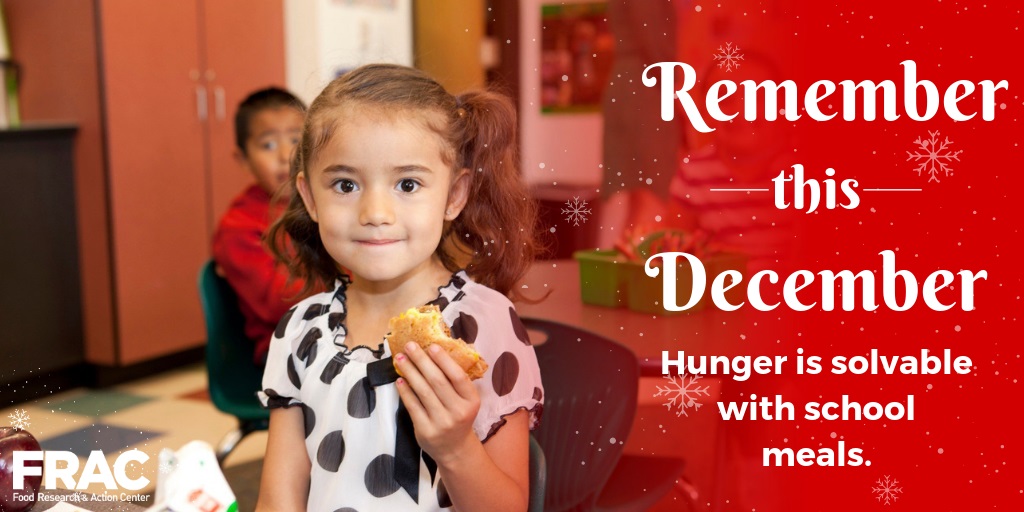December 6, 2019
During the holidays and all year long, millions of individuals and families who struggle against hunger are able to access healthy food with support from the federal nutrition programs. To celebrate the nation’s nutrition safety net, FRAC is releasing a seven-part “Remember This December” series that will highlight the impact of seven important federal nutrition programs.
This is the second installment of the series, which focuses on school lunch. Read the previous installment on afterschool meals.

School lunch plays an important role in the health and well-being of students, especially those who live in low-income households, by ensuring that children have the nutrition they need to learn all day long. A vast body of research supports the health and educational benefits of participating in the National School Lunch Program, including a reduction in food insecurity, poor health, and obesity rates. Find out more about the impact of school lunch below:
- School lunch ensures children are ready to learn throughout the day: The National School Lunch Program — the nation’s second-largest federal nutrition program after the Supplemental Nutrition Assistance Program (SNAP) — provides lunch to more than 30 million children on an average school day. The vast majority of schools (approximately 95 percent) participate in the program.
- School lunch is critical for classroom achievement: School lunch fuels children’s minds, helping to boost academic performance, support overall cognitive development, and reduce behavioral problems.
- School lunch provides children with the nutrition they need: Reimbursable meals must meet federal nutrition standards. National School Lunch Program lunches provide one-third or more of the recommended daily levels for key nutrients. Research indicates that children who participate in the National School Lunch Program have superior nutritional intakes compared to those who bring lunch from home or otherwise do not participate.
- School lunch is being offered at no charge to 10 million students who attend high-poverty schools: Community eligibility increases participation in school lunch (and school breakfast) and dramatically reduces administrative burdens, allowing schools to focus on serving nutritious and appealing school meals instead of dealing with paperwork.
Learn more about school meals at FRAC.org, and share our “Remember This December” school meals graphic.
Watch our video on the importance of federal the nutrition programs.



